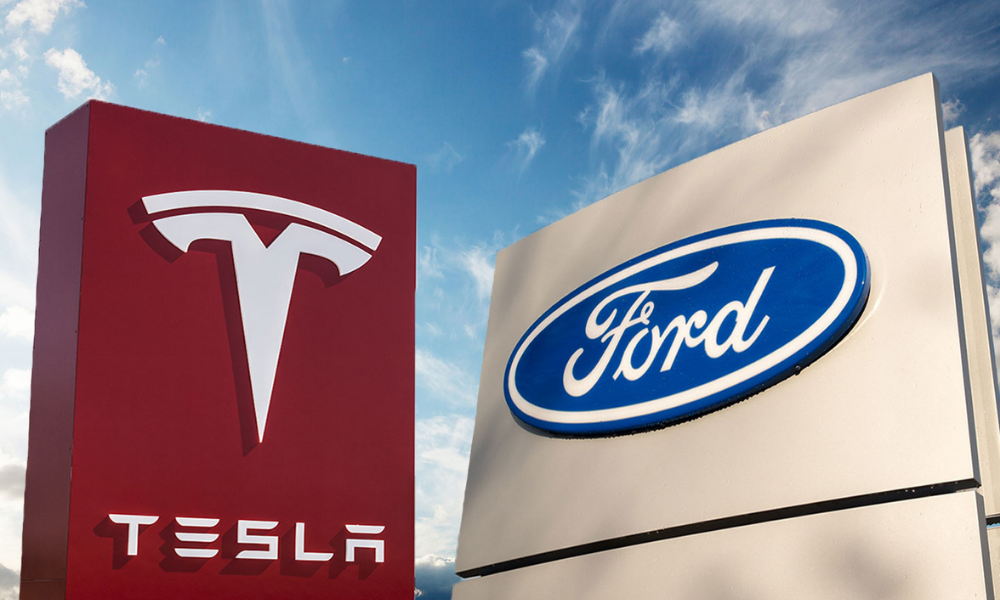
The Intertubes lit up earlier this week when news broke that Ford Motor Company had laid plans to spend up to $20 billion, on top of $30 billion pledged earlier, for a massive gasmobile-to-EV overhaul of its global operations.
This is reportedly going to be spearheaded by former Tesla Senior VP of Engineering Doug Field. Somehow Ford’s foray into new solid-state battery technology also got lost in all the excitement, so let’s take a closer look at that $20 billion makeovers.
 Trade With A Trusted Broker Trade With A Trusted Broker |
Doug Field would be the one who fits the description of a former Apple and Tesla executive, along with a stint at Segway, which makes him an A-lister in the field of vehicular electrification.
As Senior VP of Engineering at Tesla from 2013 to 2018, Field is credited with leading the development of Model 3. Though, his departure from the company in 2018 was marred when the car initially failed to meet production goals.
Field then arrived at Apple, reportedly to work on the company’s secretive Titan electric vehicle project, before moving on to join Ford last fall. According to rumors at the time, the souring of Apple’s
EV program may have precipitated Field’s departure from Apple, but last month rumors surfaced that the project is still on track and is moving into the supply chain development phase.
In an interesting twist, Field began his career as a development engineer at Ford and held that position from 1987 to 1993, when gas mobiles were still the undisputed kings of the road.
That brings us to someone else who should be featured front and center in any mention of Ford’s electric vehicle transition, and that is Hau Thai-Tang, Ford’s chief product platform, and operations officer.
Like Field, Thai-Tang has deep roots in the gasmobile field. Also like Field, he reports directly to Ford CEO Jim Farley. Last fall, Ford made it clear that Field and Thai-Tang would be working in tandem.
“Field will partner closely with Hau Thai-Tang, Ford’s chief product platform, and operations officer, to create the next generation of Ford’s connected products and experiences,” the company explained.
“Thai-Tang will continue to oversee Product Development, Purchasing, Design, Research & Advanced Engineering, EPLM / D-Ford, Advanced Manufacturing, and Ford Ion Park.”
That finally brings us to the solid-state battery angle. A lot is riding on Ford Ion Park, which popped up briefly on the CleanTechnica radar a few months ago, only to vanish just as quickly.
Ford announced plans for Ion Park last April, pitching it as “a new global battery center of excellence … to accelerate research and development of battery and battery cell technology — including future battery manufacturing.”
“We’re already scaling production of all-electric vehicles around the world as more customers experience and crave the fun-to-drive benefits of electric vehicles with zero emissions,” said Thai-Tang at the time. “Investing in more battery R&D ultimately will help us speed the process to deliver more, even better, lower-cost EVs for customers over time.”
If you’re thinking solid-state batteries are in the mix, join the club. Thai-Tang is a big fan of the technology, as manifested by Ford’s $130 million investment in the solid-state battery company Solid Power last spring, along with BMW.
| Trendy News: Facebook Stock Plummets 26% In Its Biggest One-Day Drop Ever |
Against this backdrop, on February 3, Ford issued its fourth-quarter results and talked up its electric vehicle plans, positioning itself as “a leader in must-have connected, electric vehicles.”
By that, they probably mean the electric versions of legacy gasmobile brands with high name recognition, the Mustang Mach-E, the F-150 Lightning pickup truck, and the E-Transit van, which are big hits among EV buyers. Source: Cleantechnica..